404 errors are a common issue on Shopify stores, especially when products are discontinued, URLs change, or collections are reorganized. While a single broken link might seem harmless, they often accumulate over time, affecting both search engine visibility and how customers navigate your store.
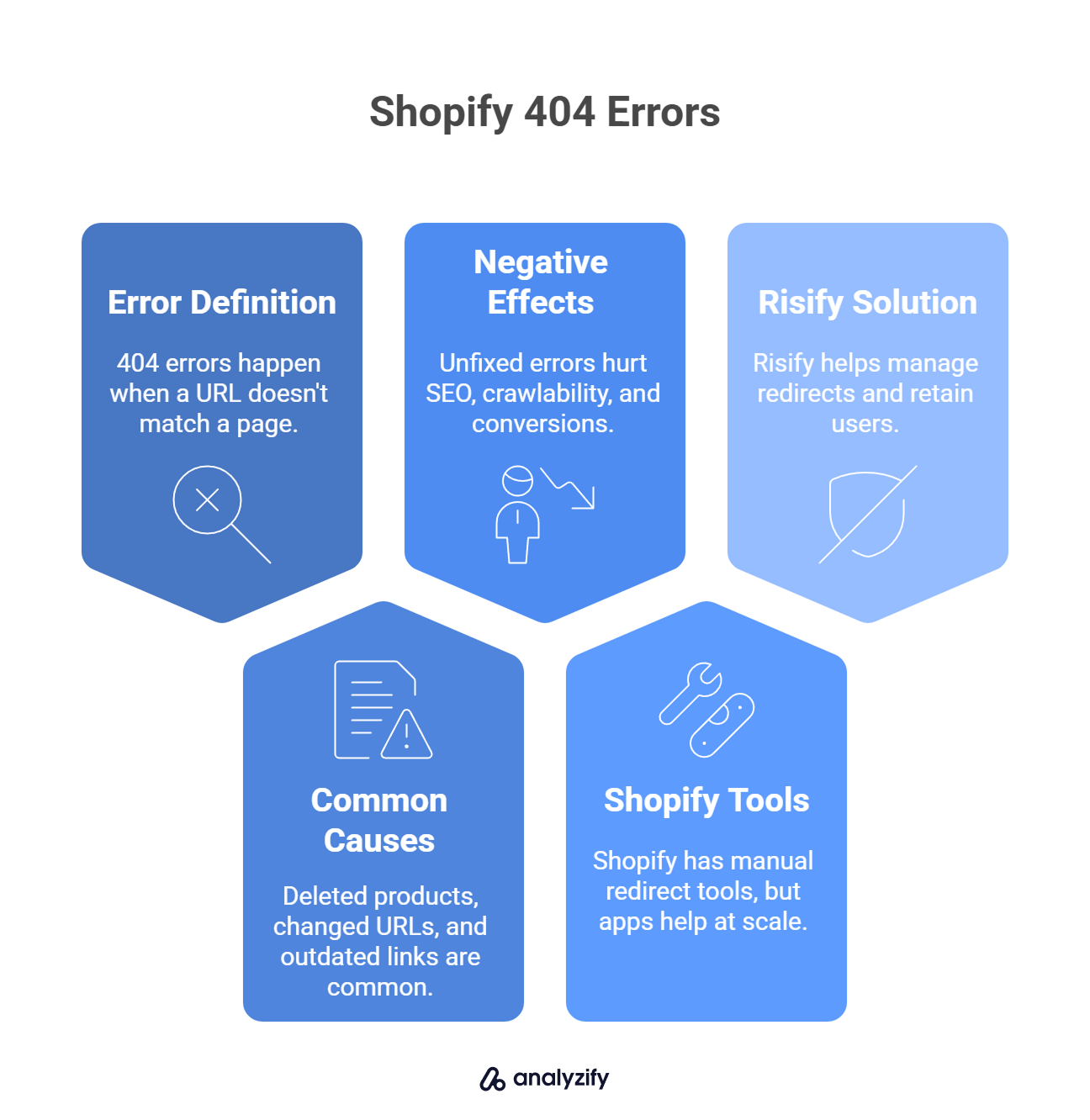
✅ Key Takeaways:
404 errors occur when a requested URL no longer matches an existing page on your Shopify store
Common causes include deleted products, changed collection URLs, and outdated external links
Unfixed 404s can negatively affect SEO, crawlability, and conversion rates
Shopify offers manual redirect tools, but managing broken links at scale often requires an app
Risify helps Shopify merchants manage redirects and retain users through fallback navigation
What Causes 404 Errors on Shopify?
A 404 error means a customer or search engine requested a page that no longer exists. On Shopify, this often happens when you remove or rename a product, blog post, or collection without updating all incoming links to that content.
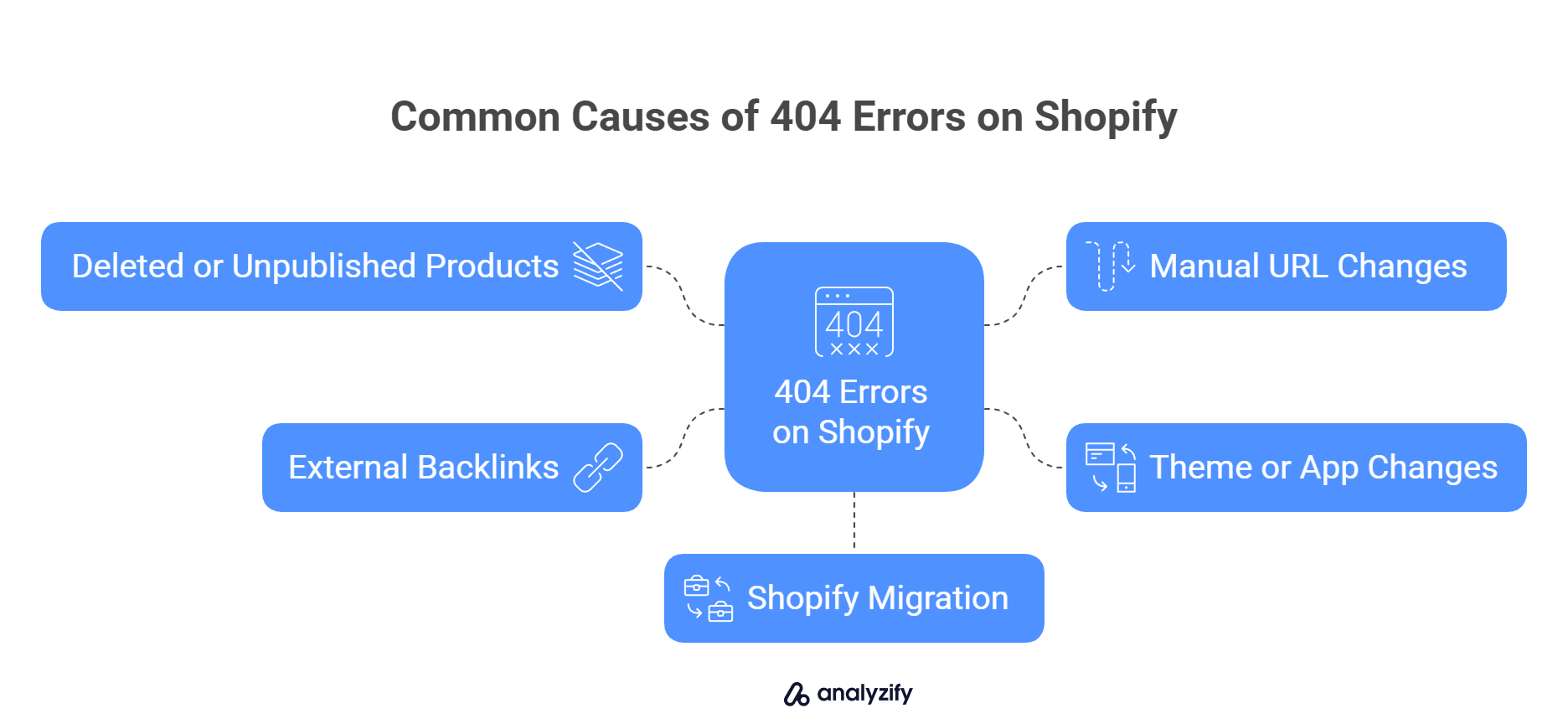
Here are the most common causes:
Deleted or unpublished products: When you remove an item from your store, any existing internal or external links to it will return a 404 unless redirected.
Manual changes to URLs: Editing the handle of a product or collection page in Shopify creates a new URL. If no redirect is added, the old link breaks.
Theme or app changes: Switching to a new theme or installing a third-party app that modifies your navigation or URL structures can create unexpected link issues.
External backlinks or outdated bookmarks: If your store has been linked on Pinterest, blogs, or directories, those links may still point to old content that no longer exists.
Shopify migration or restructuring: If you’ve recently migrated platforms or reorganized your content, older links may now be invalid.
Not all broken links are immediately visible to you as a store owner. Many only show up in analytics when users land on your default 404 page or in Google Search Console under indexing issues. That’s why regular monitoring is essential, especially on stores with high traffic or frequent product updates.
Bonus: Learn more about How to Improve Shopify Collection Page Navigation
Why Fixing 404 Errors Matters for SEO and Conversions
When a customer lands on a 404 page, it’s usually a dead end. If it happens often, users begin to lose trust in the store and leave without making a purchase. From an SEO perspective, search engines treat broken links as signs of poor site maintenance, which can impact how your store ranks over time.
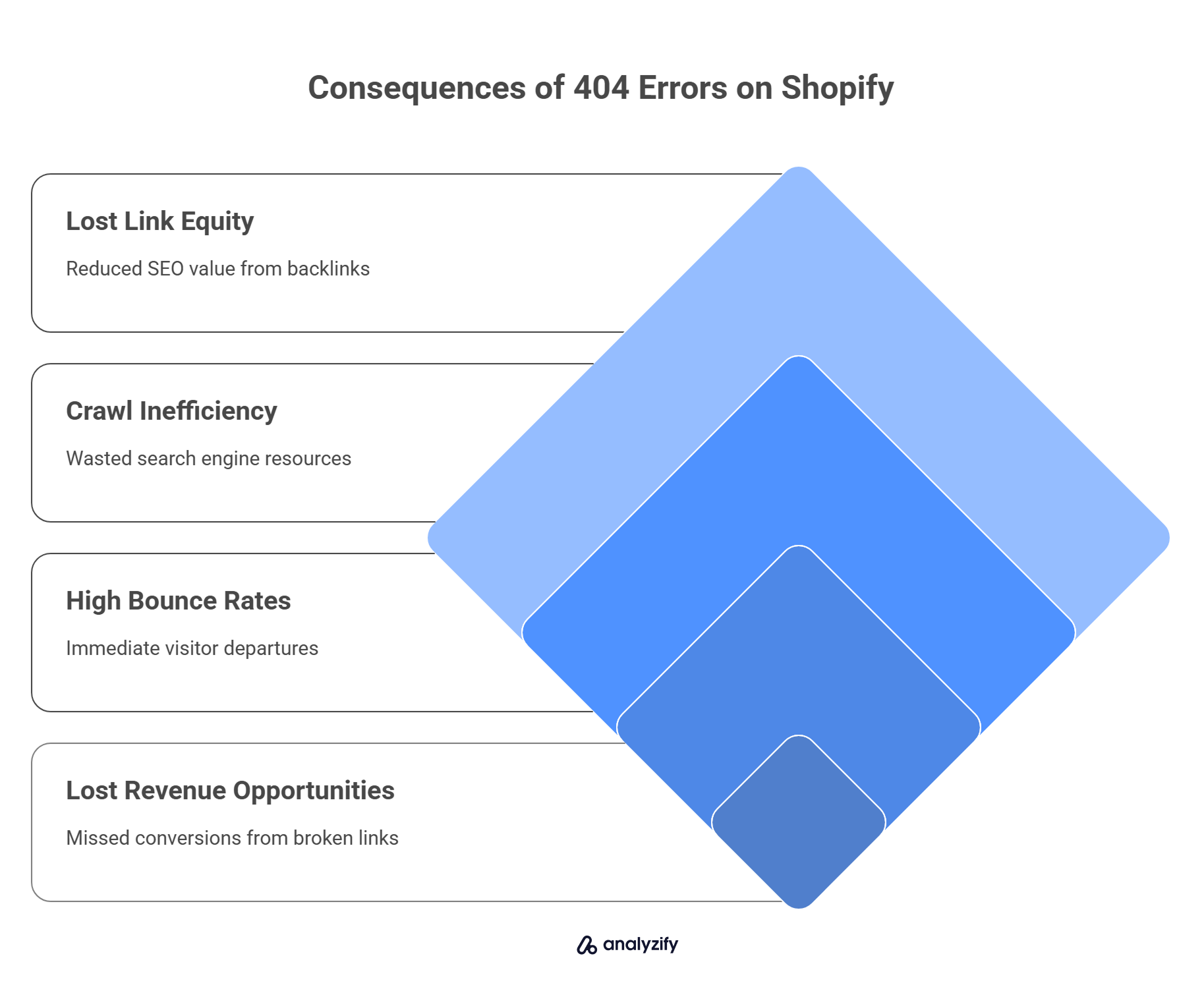
Here’s what actually happens when 404 errors are left unresolved:
Lost link equity: Any backlinks pointing to the broken URL no longer transfer value to your site. This can lower your domain authority and page-level ranking.
Crawl inefficiency: Search engines waste crawl budget on dead pages instead of indexing your live, valuable content.
High bounce rates: Visitors who hit a broken page without a clear path forward are more likely to leave immediately, which reduces session depth and engagement.
Missed revenue opportunities: If a user lands on a broken product link from an ad, email, or collection page, the chance to convert that visit is lost.
All of these effects compound as your store grows. The more products, collections, and content you publish, the easier it is for broken links to appear unnoticed.
How Risify Helps Prevent These Problems
Risify helps you manage redirects in a more structured way. Instead of relying only on Shopify’s manual redirect feature, Risify lets you:
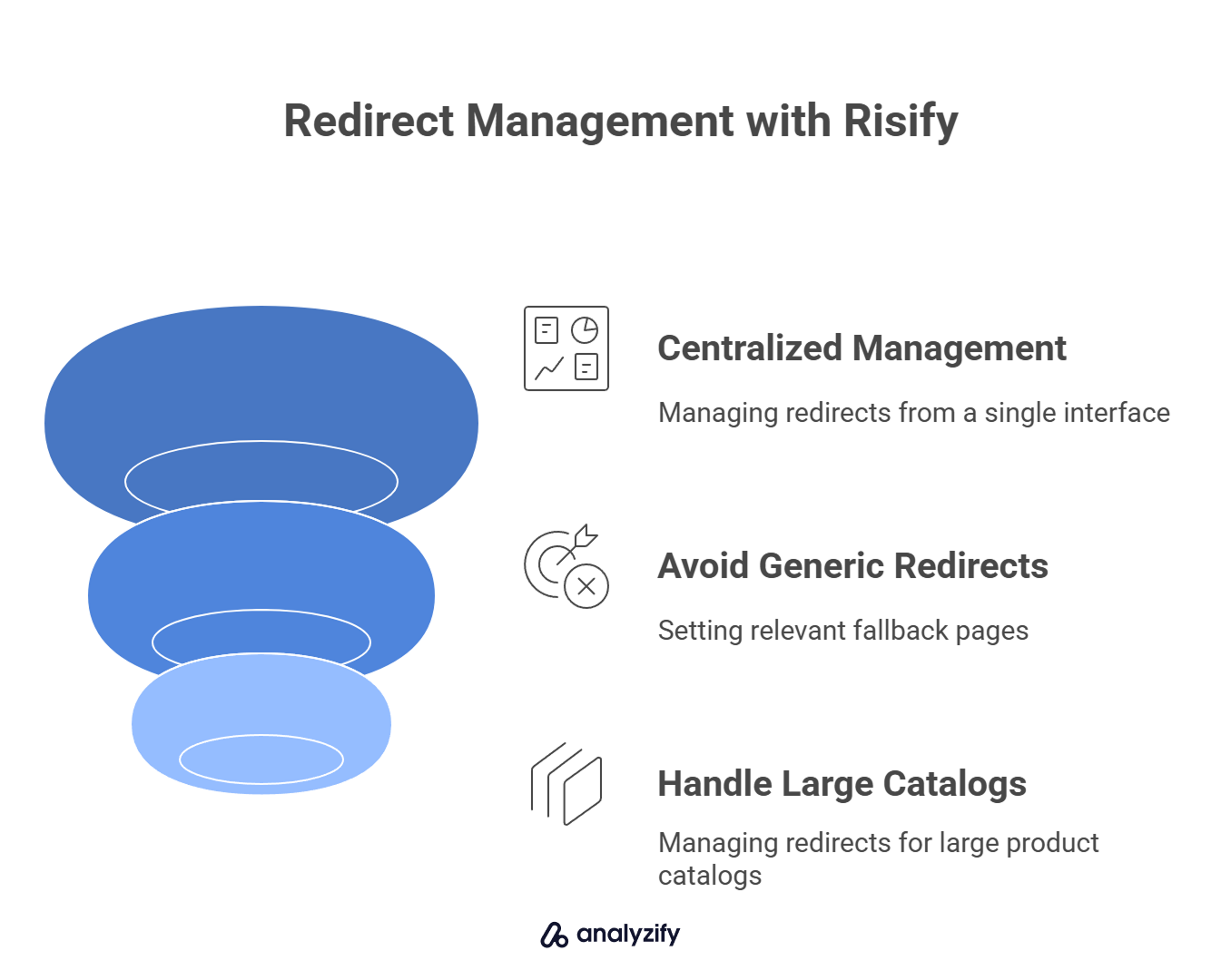
Create and manage redirects across multiple broken links from a single interface
Avoid generic homepage redirects by setting relevant fallback pages
Handle large product catalogs or seasonal changes without creating orphaned pages
By combining redirect control with fallback navigation (such as showing related links when a page isn’t found), Risify helps reduce drop-offs and keeps visitors moving through your store.
How to Find Broken Links in Your Shopify Store
Identifying broken links and 404 pages on Shopify isn’t automatic — you need to actively monitor several data sources. Here’s how you can locate them using a mix of free tools, built-in analytics, and enhanced tracking setups.
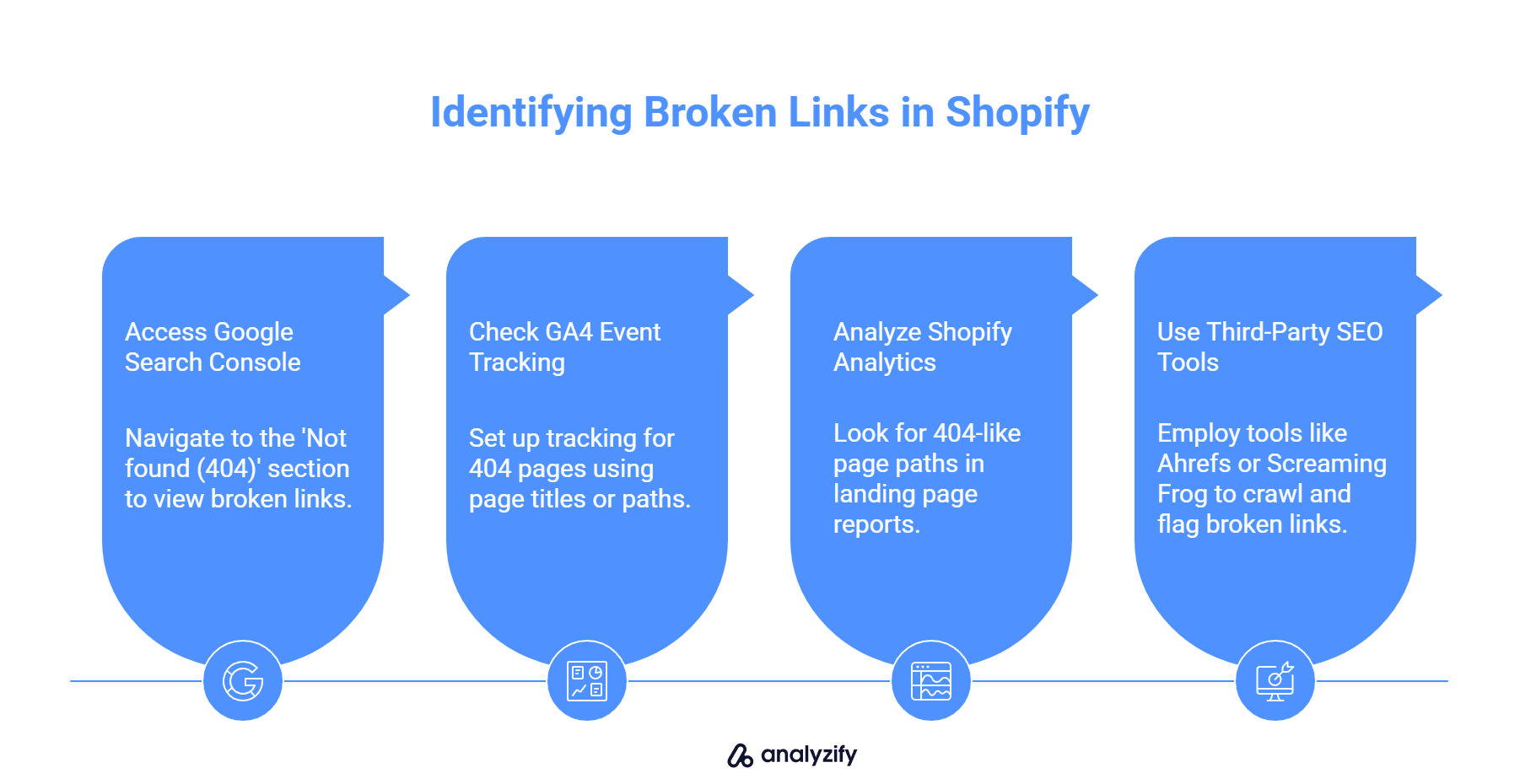
Google Search Console (GSC)
In GSC, head to: Indexing > Pages > Why pages aren’t indexed > Not found (404)
This list shows URLs Google attempted to crawl but failed. These may include deleted products, outdated blog links, or broken navigation items. You can also export the report for prioritization.
For more context, check the Referring Page column to find where each broken link was discovered — this helps you fix the source, not just the result.
GA4 Event Tracking (with or without Analyzify)
GA4 can track 404s if your 404 page has a consistent URL or HTML title (e.g., /404 or “Page not found”).
To set this up:
Navigate to Reports > Engagement > Pages and screens
Filter by Page title or Page path matching your 404 pattern
You can also build a custom exploration showing the previous page path before the 404, helping you track broken internal links
For stores using Analyzify, these events are often pre-tagged and available in Looker Studio dashboards, saving setup time.
Shopify Analytics
In Shopify Admin > Reports > Sessions by Landing Page, look for page paths that resemble /404, /pages/404, or long nonsensical URLs. If they receive meaningful traffic or conversions are zero, investigate where those links are coming from.
Third-Party SEO & Audit Tools
Tools like Ahrefs, Screaming Frog, and SEMrush can crawl your site structure and flag:
Broken internal links (e.g., menus or blog posts linking to deleted products)
Broken backlinks pointing to your store from external sources
301/302 chains or redirect loops
These tools are especially useful after theme updates or large-scale product restructuring.
How Risify Helps Streamline This
Risify focuses on the parts of the broken link problem that directly impact your users and conversions. It helps you:
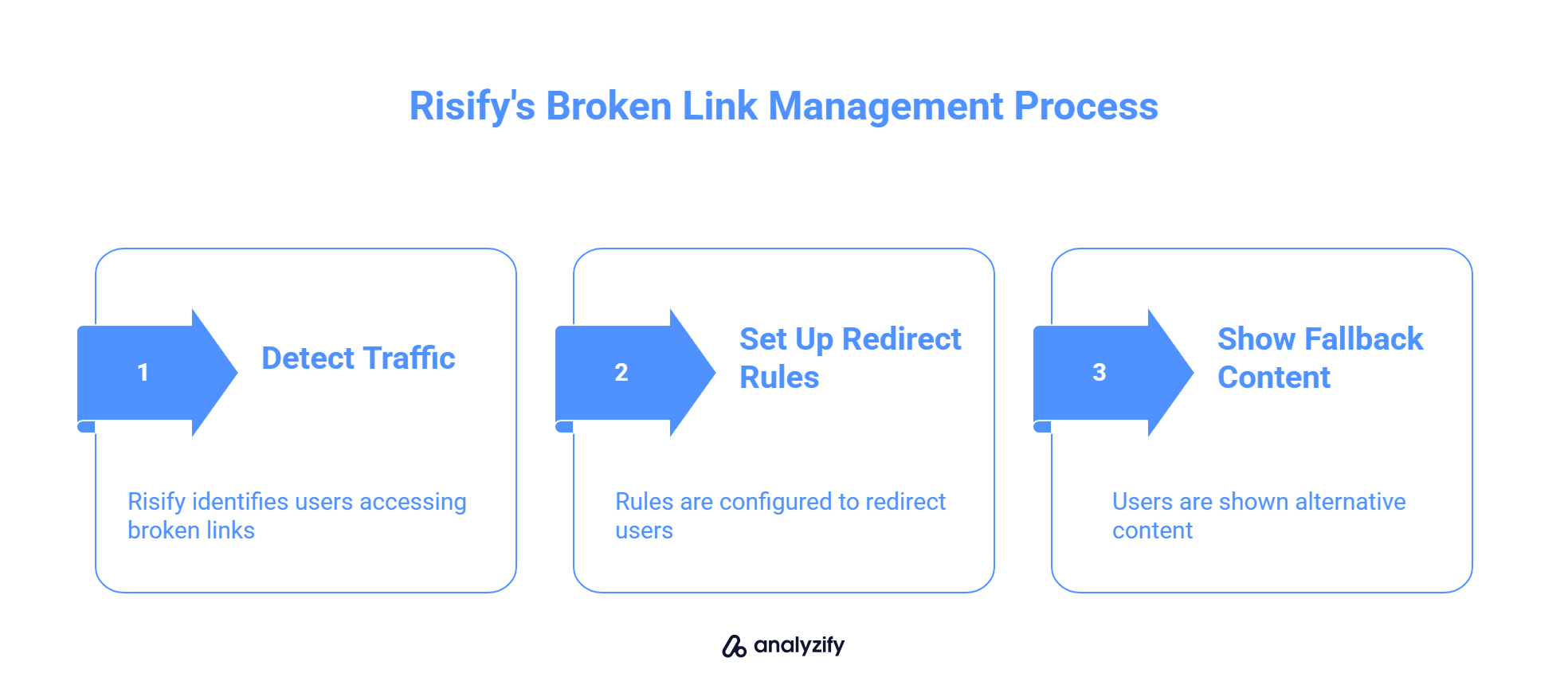
Detect traffic hitting broken or outdated links based on live user behavior
Set up redirect rules for common cases like removed products or renamed collections
Automatically show fallback content or related search blocks when a page can’t be found
Instead of reviewing every possible broken URL from a full crawl, Risify lets you prioritize what matters most: fixing the links your visitors are actually clicking.
How to Fix 404 Errors on Shopify (Manually or with an App)
Once you’ve identified broken links in your store, the next step is setting up redirects. Shopify includes a built-in redirect feature, but it’s limited when you’re dealing with dozens or hundreds of outdated URLs.
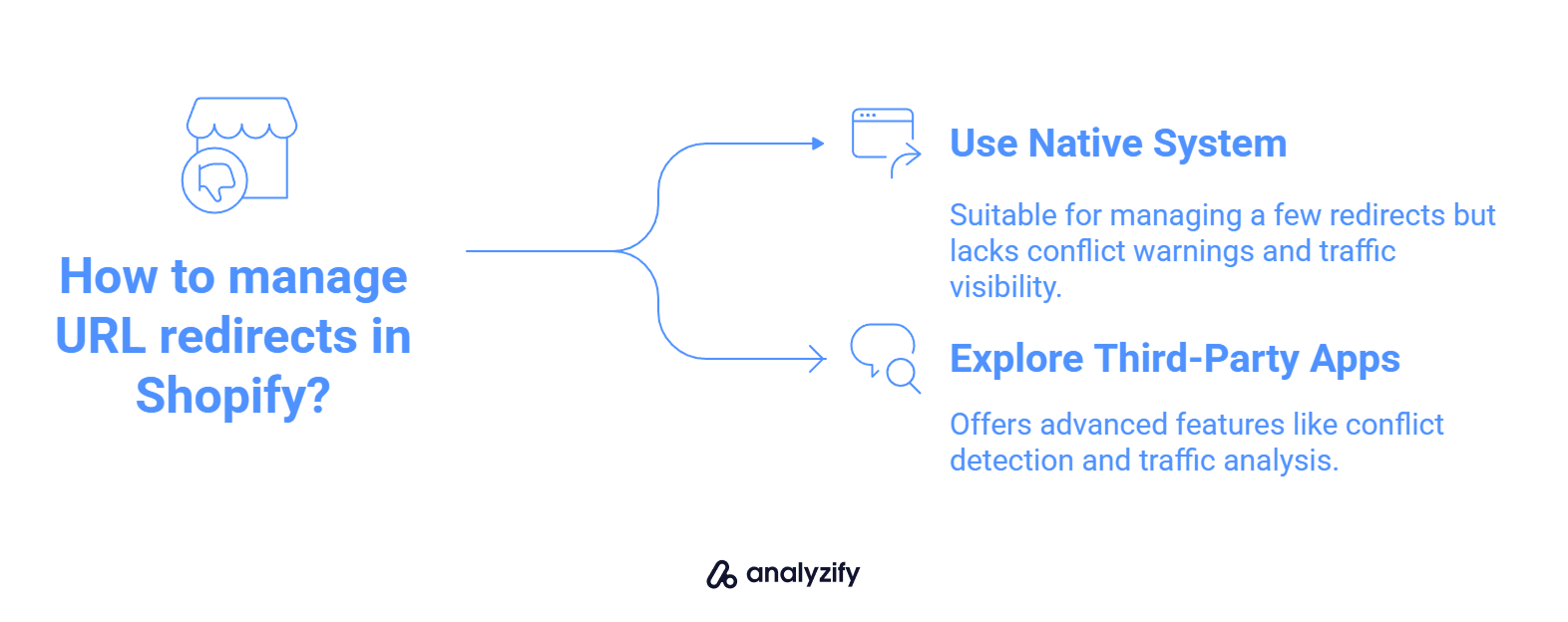
Manual Redirects in Shopify
Shopify allows you to create individual redirects from Online Store > Navigation > View URL Redirects. You can enter the old URL path and the new destination. This works fine if you only have a few broken links to manage.
However, the native system has limitations:
There’s no bulk import unless you use a CSV
It doesn’t warn you about conflicting redirects
You can’t preview how redirects will affect user flows
There’s no visibility into whether the old URLs still get traffic
If you’re updating collections regularly or removing products with seasonal cycles, this process becomes difficult to maintain manually.
App-Based Redirect Management
Apps offer more flexibility and automation when managing Shopify 404s. Some apps crawl your store and suggest redirect paths, while others let you handle redirects in bulk with filtering, logging, and fallback destination features.
This is where Risify steps in.
How Risify Improves Redirect Handling
Risify is built to go beyond basic redirect mapping. It helps you:
Set up redirects at scale with an easy-to-use interface
Prevent redirect loops or dead-end fallbacks by showing category-level destinations instead
Handle dynamic store structures, such as when you rename collections or launch new product groups
Provide fallback navigation or related search when a page can’t be recovered, helping users stay engaged
Instead of redirecting everything to the homepage or leaving 404s unresolved, Risify lets you guide users toward relevant alternatives with minimal effort.
Final Thoughts: Don’t Let Broken Links Quietly Hurt Your Store
404 errors might seem like a small issue, but they affect both search rankings and user trust over time. Whether it’s an outdated product link or a deleted collection, every dead end is a lost opportunity.
Fixing 404s is about guiding users toward something useful instead of losing their attention. Redirects help, but they’re only part of the solution.
That’s where Risify comes in.
✅ Fix 404 Errors, Keep Users Moving
Risify helps Shopify stores manage broken links at scale and make sure users always have a path forward.
Create and manage redirects from one place
Show fallback content or related search when a page can’t be found
Protect SEO performance and reduce user frustration
Don’t wait for 404s to build up. Improve your store’s structure now.

































